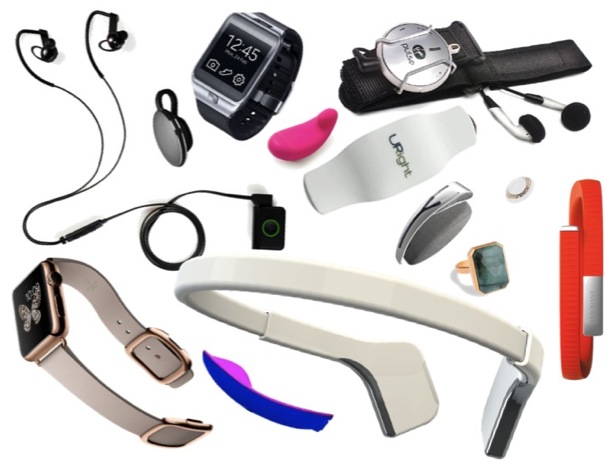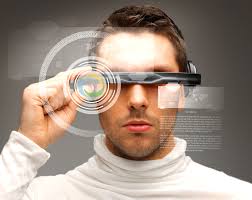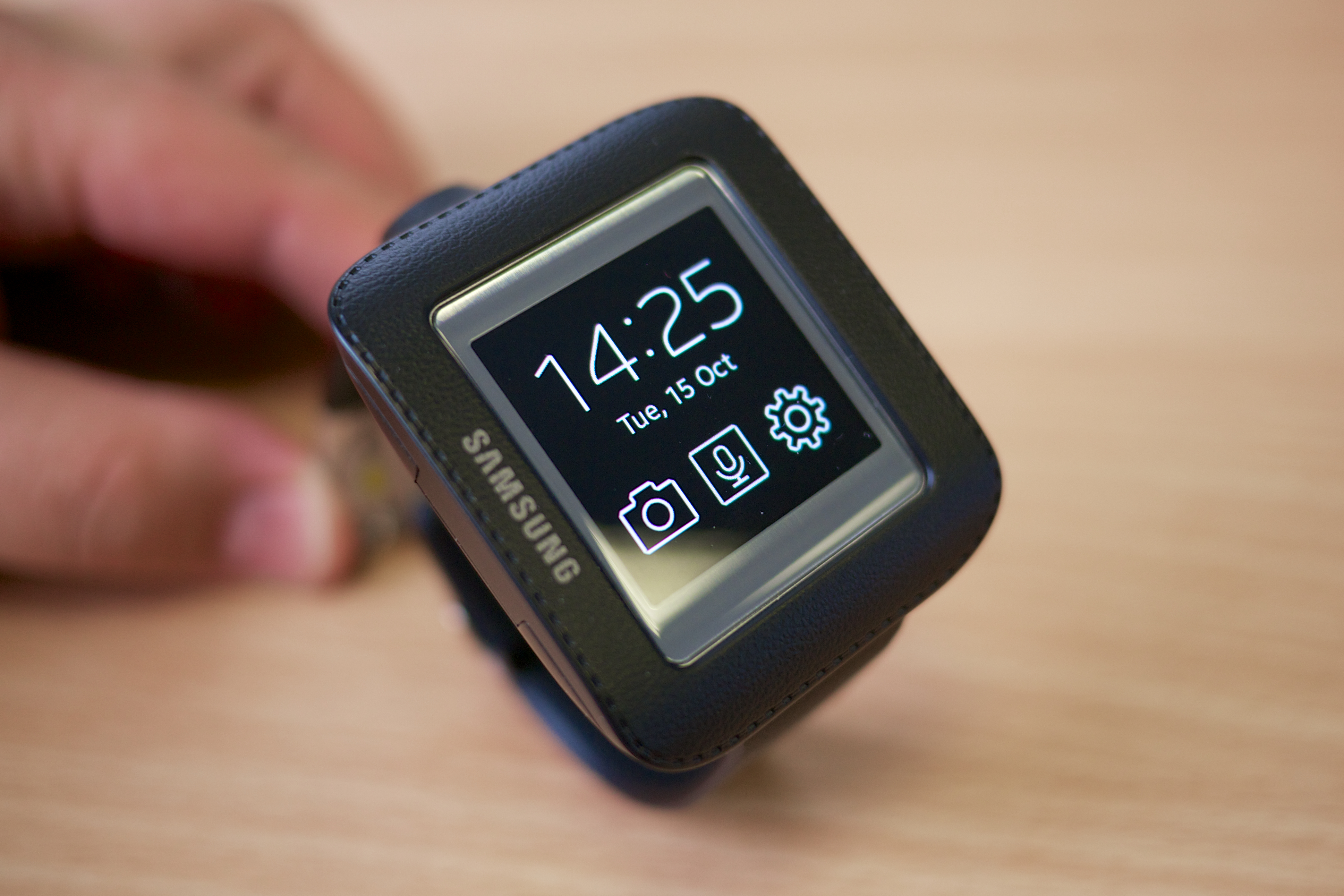Professor Thad Starner believes wearables can be used for the betterment of mankind, to accent and improve memory, understanding, and enjoyment of the world. But not everyone is so enthusiastic. Wearable technology can also be used for exploitative purposes; to harvest private data, stripping humanity of its anonymity and individuality by reducing people to carefully cataloged numerical data. UX designers are caught in the middle of the storm, responsible for striking an ethical balance.
Professor Starner is well qualified to make a statement about wearables; for one thing, he is probably the single largest reason anyone has heard of Google Glass. Professor Starner works at the Georgia Institute of Technology’s School of Interactive Computing. He has the dubious distinction of being the first MIT student ever to wear a computer during his final presentation to procure his PhD. He also started the school’s infamous Wearable Computing Project.
Looking just from Starner’s perspective, we could believe that wearables will enhance and improve the daily life of most people. But we would be negligent as UX designers if we didn’t look at the other side of the story as well; wearables track an awful lot of data, and that data can be used for corporate exploitation.
This article will explore both sides of this argument: will tracking what we say and do enhance our reality, or lead to exploitation of personal data?
A Brief History of Wearables
For the uninformed, unfamiliar, and the previously disinterested, it’s best to quickly address the definition of a wearable as well as its more common applications. In sum, a wearable is a digital device that can be worn as jewelry, clothing, or an otherwise easily accessible accessory. These can be a wide variety of items. Watches, clothes, hats, and headsets all have wearable iterations available. There are even ingestible devices and tattoos which stretch the definition of the term to its limits.

Wearables normally serve a specified purpose such as collecting biofeedback. However, they can also be used as a complete digital substitute for more “traditional” devices like laptops or smartphones. In either case, wearables are used to make an either wide or narrow swath of information easily available to their users in everyday life.
Understandably, with such a squishy definition, the category has become quite diverse. When most people think of “wearable technology,” visions of Google Glass immediately come to mind. Yet the search giant’s ambitious attempt to bring cybernetic enhancements into the mainstream only covers a very small section of the overall definition. Still, the Glass is as good a place to start as any for understanding exactly what a wearable revolution might entail. Thus it’s important to remember the man behind the machine, or in this case, the man wearing it.
The Good: Humanity’s First Cyborg
Starner’s ideal for the future of wearable tech involves user interfaces that appear and disappear at will, with information that enhances the user’s reality. To that end, he’s been working on building usable, lightweight computers that can call up useful data, appropriate to any given situation, while still remaining unintrusive when not in use.
Such devices could aid users in their daily activities—everything from commuting to work to looking up movie times—without ever distracting them from their real world tasks. Starner is actually able to use his personal wearable (adorably dubbed Tin Lizzy) to record notes during his conversations, both face to face, and via digital communication.
During an interaction, Starner activates Tin Lizzy, and it records the conversation in whatever medium it’s taking place (email, audio/video recording, etc.). Simultaneously, he can record his own (text) notes during said interaction. Whenever he needs to recall something about a specific person, event, or conversation he uses Tin Lizzy to search through his extensive personal notes about the subject. His memory is effectively offloaded into the digital realm.
However, Starner is well aware that if augmented memory is going to be useful, it has to be a selective. The algorithm needs to recognizes specific type of interactions and prioritize. This would represent an extreme boost in the UX of the current generation of wearables, allowing for effortless information retrieval that adds to a user’s experience rather than distracting from it. Unfortunately, this is a dream beyond the reach of current technology. The closest Starner has come is to design a program created specifically for Tin Lizzy that he calls the “Remembrance Agent.”
Remembrance Agent presents a text blurb of everything the user has noted about a given topic, whenever the subject is in view of the wearable’s sensor. It sounds impressive, but the program isn’t a cure all. Starner has gone on record to say:
Most of the time it pulls up garbage, stuff that doesn’t matter. But 5% of the time it pulls up something that’s really relevant. All it takes is a one-line summary to remind me of what was so important…
5% isn’t exactly a stellar success rate, but it’s a fantastic starting point, speaking directly to a UX designer’s goals: providing useful, contextually relevant information. As the technology improves, such software could be used to allow the wearer to demonstrate comprehensive recall on almost any subject he or she has ever studied. Moreover, if the memories/notes of all Remembrance Agent users were collected, curated, and efficiently organized on the cloud, we would achieve a digital version of Jung’s collective unconscious. Speedy access to information of this magnitude could result in some amazing increases in efficiency:
- Decreased time spent researching among academics
- Lives saved because doctors have instant access to medical records
- More pervasive data gathering
Essentially what’s being discussed here is a world that’s no longer devoid of context. All data is interconnected, and wearable technology such as Tin Lizzy is ultimately offering a comprehensive view of those connections. A better informed, highly educated, and hopefully more empathetic human race. It’s a heady UX dream.
The Bad: Corporate Exploitation of Personal Data
As valuable as wearables can be, the reality is that they are also invasive. They gather data about their environments and that data is just as ripe for malevolent purposes as it is for altruistic ones. Google Glass, for example, immediately earned some negative media coverage when several restaurant, bar, and casino owners banned its use on their premises due to concerns about customer privacy.
The idea of an individual wearing a futuristic looking headset, sitting in a corner, and surreptitiously recording his or her surroundings is a powerfully discomforting one for many consumers. Unfortunately, that’s not the worst of it in terms of possible privacy violations. Wearables provide new, previously unthought-of datasets. Their introduction into society represents even greater access into a user’s private data.

Many people worry about being recorded without their knowledge, but they should be horrified of the possibility that health insurance providers could refuse them coverage, based on data gleaned from wearable technology. Fitbits, for example, provide data that could classify entire swaths of the population as sedentary, and therefore at high risk for obesity, diabetes, and a number of other debilitating diseases. If a Fitbit user fit into this demographic they could find their health insurance premiums getting hiked.
With regulators far behind the times and slow to adopt new policies, technology is quickly outpacing politics. Information is power. Giving personal, biological data to Unitedhealth or Kaiser Permanente and expecting them to handle it in a way that’s beneficial to their customers is a very big (and perhaps naive) gamble.
George Orwell envisioned a future where TV screens in the home would record an individual’s every move. He had no way of planning for wearable tech. The dystopian reality is that wearables could easily be outfitted not only to record every move or word within the home, but everywhere an individual goes. Not only that, but it could record biorhythms, calories burned, and so on.
The most intimate of data streamed to an unknowing and uncaring totalitarian presence is (for many) a nightmare. And the precursors for this tech are already in production. LG, for example, sells wearable baby monitors, an innovation that is simultaneously helpful for parents, and conditions children to accept ubiquitous monitoring of their behavior. Decreasing a small child’s privacy might not seem a drastic step, but it falls fretfully near the edge of a slippery slope.
The UX Designer’s Role
Wearables have amazing potential as a burgeoning technology, one that could revolutionize the way that humans interact with the world. At the same time, this technology reinforces the fact that policy makers have to confront ethical dilemmas presented by the erosion of privacy.

But how can the UX designers of today avoid the Orwellian future? Certain companies are already working toward a relationship of mutual trust with their customers. While there is a balance of utility and privacy, it’s not as if human beings haven’t been playing that game on a small scale for a long time. Doctors, psychologists, lawyers, and any other position of trust have long been expected to hold onto a degree of discretion when dealing with their client’s sensitive information.
Mad*Pow, for example, is a design agency with a conscience. Taking their cues from the Hippocratic oath, Mad*Pow reached out to 15 different designers who work within the areas of service, product, experience, graphic, and social design. Together, they created three different versions of a living document they’re calling the “Designer’s Oath.” These docs lay down specific guidelines to regulate the interactions between designer and clients. It’s hoped that by presenting and discussing these ideas they can create a template for universal recognition of the relationship between ethics and design.
The state of wearable UX just isn’t quite where it needs to be just yet. When designing for wearable interfaces in the future, it’s important for UX designers to remember three things:
- Address user’s privacy concerns. Designing for privacy should always be a top concern, but it’s all the more important with wearables. Be honest and open about how the data is collected and who has access to it. And always work to safeguard private data that a service or product collects.
- More importantly, if there’s any choice at all, don’t sell user data to any corporate entity that might misuse the information to oppress or disenfranchise the user.
- Design unobtrusive interfaces. Start with minimalism and perform as much A/B testing as is humanly possible. The only way to see what really works best is to test everything.